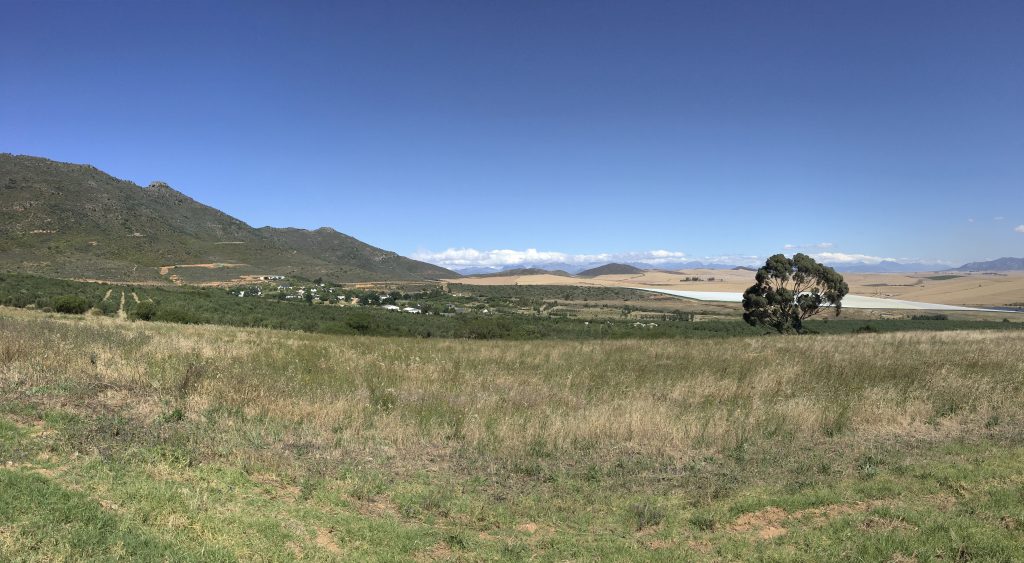
A recent visit to the winelands of the Cape confirmed for me what informed wine industry observers have been saying recently: there is indeed a brave new world of wine emerging in South Africa. To be sure, this new wave of winemaking and wines is still in its relative infancy. Or, as noted young winemaker Chris Alheit was quoted as putting it: “[I’m] dead certain that the golden age of Cape wines is ahead of us.”
What underlies such confident predictions? And what evidence did my brief visit produce to support my assertion that the Cape is undergoing a wine revolution of sorts?
The answers lie not where you might expect, but rather in some of the more remote, out-of-the-way corners of the Western Cape, where smaller vine growers and wine producers are exploring new viticultural areas or reclaiming old vines that had either been all but abandoned or over-cropped for grapes that disappeared into undistinguished blends made by local cooperatives. Old habits die hard, as they say, and this form of volume-driven agriculture has deep roots in the Cape, where for many decades farmers were paid by the quantity, not quality, of their grapes. But this model is changing. And in the process, new wines are emerging that radically redefine what these areas are capable of. In short, the wines are profoundly impressive.
Foremost among these areas is the large region called Swartland. Until recently the Swartland, which stretches far north of Cape Town and the better-known premium wine regions of Stellenbosch and Paarl, was an agricultural backwater, with mixed farming based on wheat, cattle and sheep. What wine was made here came mostly from the local cooperatives. This is seriously hot, arid, unforgiving country, far from the bright lights of the city. Or, as a South African farmer might put it, no country for sissies!
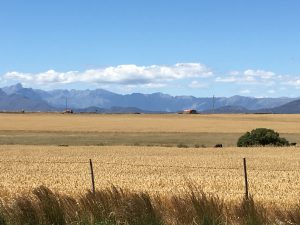
Aided by the pioneering work of the Old Vine Project (OVP) headed up by Rosa Kruger, a new generation of younger winemakers (many of whom own few if any vineyards) have negotiated contracts with longstanding farmers for the fruit off their oldest vineyards. The yields from these old vines are often minuscule, but the quality of fruit and resulting intensity of wine are extraordinary. Winemakers are also planting new vines, but using far more thoughtful methods of viticulture that seek to better understand local climate conditions, soils, ecosystems and grape varieties. Honest expression of local terroir is now a key guiding principle. Another is what the French refer to to as la lutte raisonée – that is ‘the reasoned fight’: the carefully considered use of natural, organic and even biodynamic cultivation methods balanced with modern technology and tools as required.
The dramatic improvement in wine quality from the earliest winemaking pioneers was so obvious that even some of the more established, larger Cape wineries have gotten in on the act: consider the excellent Cape of Good Hope line of wines being made by Anthonij Rupert Wines, or Boekenhoutskloof’s extraordinarily complex Syrah now made principally from Swartland fruit (and their standalone Porseleinberg wine, made exclusively from the eponymous Swartland farm). These are wines that can stand alongside those from anywhere else in the world in terms of quality and expressiveness.
But the most exciting ‘new wave’ Cape wines, for my money, are those coming from producers such as AA Badenhorst, Sadie Family Wines, David & Nadia, Mullineux Family Wines, and the aforementioned Alheit Vineyards. All of these are either based in the Swartland or source some or all of their grapes from there. On my recent trip I spent extended time with both the Mullineux and David & Nadia, and was blown away by the sheer quality, focus and integrity of purpose of these young winemakers.
The Mullineux’s Roundstone farm lies on the southwestern slopes of the Kasteelberg mountain, just outside the charming country town of Riebeek-Kasteel. Here the husband and wife team of Chris (viticulturist) and Andrea (winemaker) handcraft extraordinary wines from the granite, iron and schist-based soils of the Swartland.
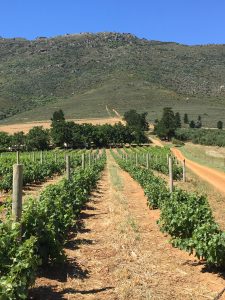
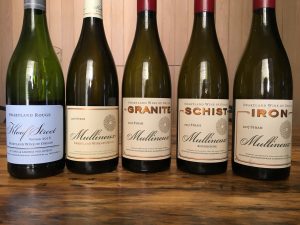
Words like ‘linear’, ‘mineral’, ‘elegant’, ‘balanced’ and ‘structured’ pepper my tasting notes, which became ever more cryptic as we went on. At some point you just have to surrender and let the wines wash over you in all their complexity and individuality.
Out in the vineyards, Chris points out how they have planted fynbos in broad strips between blocks of vines. These indigenous plants help nourish the soils, supporting insects, birds and animals that contribute to a healthier, more sustainable vineyard. Chris also plants ground cover crops between vine rows, which help cool the soils and replenish nutrients. New vine plantings are mostly bush vines. The Mullineux are also experimenting with new plantings of more drought- and heat-resistant grape varieties, in response to the accelerating impacts of climate change.
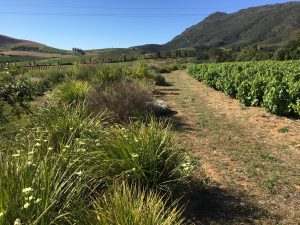
Chris and Andrea are now partnered with Indian businessman Analjit Singh, renaming their company as Mullineux & Leeu Family Wines. Analjit has invested heavily in the Cape wine industry, acquiring land in the Franschhoek Valley and building a new winery. There, on the Leeu Estates farm, the Mullineux now also make a separate range of equally impressive wines, under the Leeu Passant name. The story continues to evolve.
We overnight at the impossibly charming old Royal Hotel in Riebeek-Kasteel. Don’t miss a dip in the pool, sipping a gin & tonic on the long verandah overlooking the main road or at the wood-panelled bar, and dinner in the atmospheric dining room overlooked by portraits of Winston Churchill and Jan Smuts. A glass window set in the floor reveals an extensive wine cellar beneath our feet.
In the morning, our next Swartland stop is at Paardebosch farm, home to Nadia and David Sadie. Paardebosch lies on the northern slopes of the Paardeberg mountain, facing across the plains towards the Kasteelberg rising in the distance.
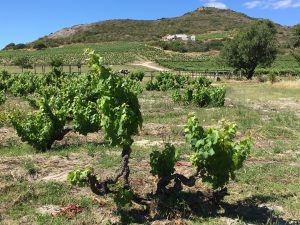
When we arrive, a young man greets us and introduces himself as André Bruyns. Turns out he’s the assistant winemaker, and David is on his way. Viticulturist Nadia meanwhile is out in the vineyards somewhere, where she is apparently happiest.
The first question I put to David when he arrives is whether he’s related to his near neighbour and Swartland wine pioneer Eben Sadie. The short answer is no, but there follows a much longer, convoluted story about the extended Sadie clan history. So eventually yes, it seems they are distantly related.
David and Nadia, both graduates of Stellenbosch University’s viti/viniculture program, make a range of stellar wines focused on Chenin Blanc and Grenache. As David says, wine is all about natural balance, purity and freshness, and their wines beautifully reflect this. Their focus is on different soil types, mountain terrain and older bush vines, with a minimal intervention approach to winemaking. David and Nadia also work with Rosa Kruger, and David serves on the OVP board.
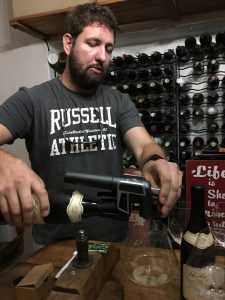
David notes that “I showcase freshness, tension, texture and minerality, not on full ripeness…I bring acid to the table…and no new oak, which masks the wines.” Again, we taste through their entire lineup, including three different but equally impressive Chenin Blancs – the Hoë-Steen, Skaliekop, and Platbos. The first of these is off a vineyard planted in 1968 in deep red iron and clay rich soils, located west of Malmesbury towards Darling. The Skaliekop is from shallow shale soils planted on Paardebosch on the Paardeberg slopes. And the Platbos is from grapes off a third old vine single vineyard, planted in 1981 next to Skaliekop in decomposed granite on Paardebosch.
This latter wine is from small, low bush vines that offer hyper-low yields of 1-2 tons/ha. This is extreme winemaking. It is also a superlative wine: “restrained, elegant, taut, saline, linear, stoney, mineral, with green apple, quince and lime notes” are some of the tasting descriptors I wrote. As for the Grenache (from granite and iron soils), it offers up “a fresh, sweet red cherry nose, with dry, intense yet delicate cherry flavours, dust and smooth tannins, underpinned by mineral and iron…”
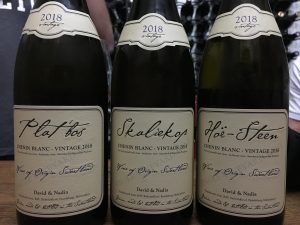
The most impressive wines for me however are the two skilful blends: the Chenin-based white Aristagos, and the Rhone-style red Elpidios. In both cases, the magnificent whole is greater than the parts.
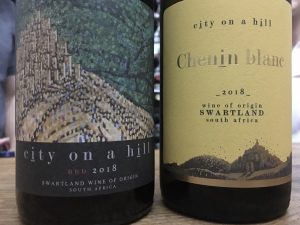 After perhaps two hours talking and tasting in the cellar, David finally announces he needs to leave, but then André re-emerges and invites us to taste his wines! And it turns out the acolyte is learning fast from his mentor. André now bottles his own wines under his City on a Hill label, made in a similarly hands-off, subtle style, from bought-in Swartland fruit. We taste his Chenin Blanc, Chenin-led White, and Syrah-led Red. All are poised, balanced, and very impressive for such a young winemaker.
After perhaps two hours talking and tasting in the cellar, David finally announces he needs to leave, but then André re-emerges and invites us to taste his wines! And it turns out the acolyte is learning fast from his mentor. André now bottles his own wines under his City on a Hill label, made in a similarly hands-off, subtle style, from bought-in Swartland fruit. We taste his Chenin Blanc, Chenin-led White, and Syrah-led Red. All are poised, balanced, and very impressive for such a young winemaker.
We have one more winery to visit on this odyssey into the brave new world of South African wine. This one lies beyond the Swartland, in another of those areas that has seen significant exploration and investment: the euphoniously named Hemel-en-Aarde Valley which lies well south of Cape Town in the Walker Bay District near the cooler south coast. This is Cape Pinot Noir country par excellence.
I’ve written about Newton Johnson Vineyards before. This is a return visit to winemaker Gordon Newton Johnson (along with his wife Nadia; see a pattern here?), to taste his enormously impressive lineup of both white wines – especially the chardonnays – and reds. After lunch in the winery restaurant, which has a panoramic view out over the entire valley, we get down to business: a bumpy drive in Gordon’s pickup (‘bakkie’) through the vineyards to look at the different blocks, soils, aspects and viticultural techniques. Here I encounter what in South Africa is called ‘stok-by-paaltjie’ vine trellising – individually pole-staked vines, a traditional system that is found in places such as the Northern Rhone, and for the much the same reason: to protect vines against strong winds. Here it’s to guard against the fierce southeaster that blows in off the nearby Indian Ocean.
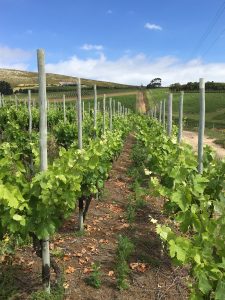
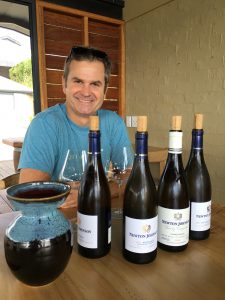 After our ride, Gordon generously pours samples of all their wines, literally from A to W (from his new Albariño to the much awarded single-vineyard Windansea Pinot Noir). The wines are unfailingly impressive, but none more so than the flight of three different, expressive Pinot Noirs that are this winery’s real specialty, and with which they have helped put South African Pinot Noir on the global wine map. Again, like his Swartland colleagues, Gordon is an exponent of hands-off winemaking, letting his various vineyard terroirs do the talking through the wines.
After our ride, Gordon generously pours samples of all their wines, literally from A to W (from his new Albariño to the much awarded single-vineyard Windansea Pinot Noir). The wines are unfailingly impressive, but none more so than the flight of three different, expressive Pinot Noirs that are this winery’s real specialty, and with which they have helped put South African Pinot Noir on the global wine map. Again, like his Swartland colleagues, Gordon is an exponent of hands-off winemaking, letting his various vineyard terroirs do the talking through the wines.
These few wineries (and several others not mentioned) offer a glimpse into the brave new future of South Africa wine. That future is bright indeed.